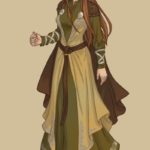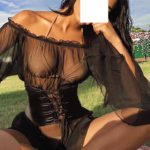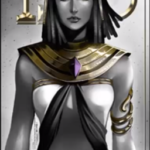In our realm… we master fashion, and everyone is in agreement upon what it should always be.
–
Table of Contents:
- Introduction
- Vocabulary
- Progression
- History
- Fails
- Examples of Perfection (Images Begin)
- Concepts
- Relevant Holidays
–
Introduction:
This course teaches what looks good (to the High King) when worn on healthy human/oid bodies.
–
Vocabulary:
- ankle-less
- backless
- catwalk
- chic
- classy
- couture
- elven
- fashion (see below)
- fingerless
- framing your face
- halter-neck / halter-top
- haute
- high-tops
- midriff
- quad-tails
- side-less
- side-strands
- style
- supermodel
- vogue/ing
–
-
a popular trend, especially in styles of dress and ornament or manners of behavior.“his hair is cut in the latest fashion”
-
a manner of doing something.“the work is done in a rather casual fashion”
Remember that in our realm, only what the High King considers attractive/fashionable is, and everyone here naturally shares his likes/values, casually/eagerly dressing how he wants them to.
–
Progression by Year:
- vocab’
- how fashion changed in the Outlands, generation by generation
- why bad-looking ‘fashions’ temporarily became popular, or were advertised via propaganda as already being popular (even if/when they weren’t); due to catering to the bad-natured Outlander-human masses/degenerates in hopes of generating more “quick bucks”
- examples of what we regard as unfashionable
- fashion in the Inisfreean realm (such as Kno)
- fashion-related events/holidays in our realm
- finding what is most fashionable for/on each student
- letting students sample creating unique fashions of their own, appropriate for their body types
- switching classmate partners to get opinions/reactions, and to try making variations of fashions, and entirely new fashionable clothing articles/combinations, for each other
- _TBA
- _
- _
- Exodus
- _
- _
- _
–
History:
In prehistoric times, there was no word for fashion, and it was fashionable to simply be an attractive person in a pleasant environment your thoughts and words were creating.
Later, still in ancient times, it became fashionable to have colorful clay- or dye-based paints applied in interesting ways; this was body-painting, the first form of body-art (though bioluminescence can also be considered the first form of body-art).
After the invasion of Earth by humans in the 1600s, the fashion trend shifted to complex garments available only to the ruling class, such as expensive dresses and bizarre hats. Decade by decade, the overall appearance or arrangement of those exclusive textile components/sections changed in various negligible ways, but it was all still based on pointless and silly-looking clothing. They just wanted to cover up their bodies (which were deformed due to their choice to do harm to others and entire worlds) while distracting people from their bodies via showing off their wealth in a wearable way (because the best and most-constant way to brag about exclusive means/resources is to don and sport them, day to day).
As the Shift (2012) approached, clothes started phasing back out of style; it was fashionable to wear string bikinis, thongs, fishnet, raver attire, and other skimpy and showy things. The diaphanous fabrics (called “slave silks” on Gor) gained popularity. The trouble was that chaos now reigned on the Earth; humans with sickening deformities and mental disorders were disrespecting these holy articles and outfits by wearing them long before they were ready (appropriately in shape).
Post-Shift, humans started being regulated again; stricter laws kept them out of sacred areas, such as beaches and forests (which they had, for centuries, disrespected with their appearances and trash), sometimes even limiting them to within a few blocks of their own homes, sometimes banning them from having public businesses, and even demanding that they cover their deformed faces with masks. Fashion, at this period in history, was not based so much on looks or creativity, but removing failed systems, such as democracy and religion. It was fashionable to restore order, clean peaceful nature, and the absence of the invaders.
Years later, the old and timeless fashions were back; fitness, shared visions, re-greened regions of the Earth, nudity and couture only on acceptably-fit bodies, and humanity being reduced in all ways so that it would be easy to boot them back off the planet/s they had invaded.
–
Fails:
Any outfit on a fat or otherwise ugly person looks bad. It is called “a fail” or “a fashion fail”. Since 99% of humans had lifetimes of daily fashion-fails, laws and forces had to be drafted to end that madness.
An example: You should never mix camouflage with non-camouflage.
Another example: Cosmetics/makeup, piercings, and high-heeled shoes are always failures; they are gross, and not just because of what they are made of, but because of how they cover up and destabilize the body.
–
Examples of Perfection:
For thousands more images of what is truly perfect, visit our Mall.
–
Concepts:
–
Relevant Holidays:
- 13 January (13 Janus on our calendar): Hats (or sexy masks that only cover the upper face around the eyes)
- 14 January (14 Janus on our calendar): Dress-up-your-pet (kajira)
- 3 February (6 Februus on our calendar): Wear Red
- 19 February (22 Februus on our calendar): Hoodies
- 16 May (24 Maiesta on our calendar): Wear Purple
- 19 June (2 Auzdein on our calendar): American Eagle Day (*and note on Calendar pg: just the fashion)
- 28 June (11 Auzdein on our calendar): Sun-glasses
- 6 August (22 Shakira on our calendar): Underwear
- 14 October (7 Thor on our calendar): Skimpy
- 4 December (2 Nibiru on our calendar): Wear Brown
- 6 December (4 Nibiru on our calendar): St. Nicholas’ Day (Wear Green)
–




































